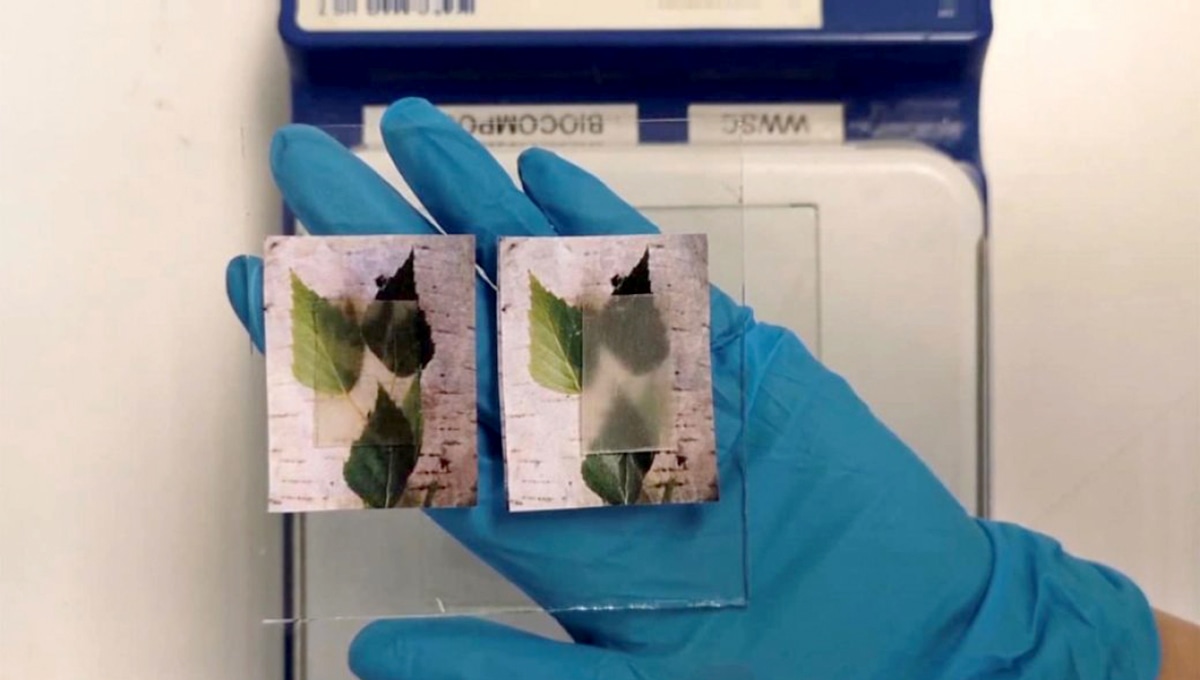Apr 5 2019
At the yearly conference of the American Chemical Society in Orlando, Florida, a newly-developed thermal energy-storing transparent wood was introduced recently by researchers from KTH's Wallenberg Wood Science Center.
 The wood material gets clearer as it stores more heat. (Photo: courtesy of Wallenberg Wood Science Center)
The wood material gets clearer as it stores more heat. (Photo: courtesy of Wallenberg Wood Science Center)
The see-through wood technology hopes to answer a necessity in the construction sector for functional load-bearing materials that can decrease energy consumption by storing and emitting large amounts of thermal energy.
Céline Montanari, a researcher at KTH, says the material offers enhanced thermal insulation and it could decrease heat loss. Similarly, in warm weather the transparent wood can be tweaked to allow a preset amount of heat to travel through, helping to maintain a relaxed indoor temperature even as the sun’s rays light up the rooms.
While the material is slightly opaque, resembling a frosted window, it becomes clearer as it absorbs more heat.
Montanari's team, which is guided by Professor Lars Berglund, has been examining wood composite from silver birch trees, which is then stripped of its lignin (the key light-absorbing component in wood), leaving empty porous spaces which are then filled with a polymer that meets the wood refractive index so that light spreads through the material.
The self-regulating thermal properties form from the incorporation of a phase change material (PCM), which is the one that transforms from solid to liquid, and liquid to solid, and can store and release large volumes of heat. In their case, the KTH researchers used a non-lethal biodegradable PCM known as polyethylene glycol (PEG).
While PEG is an operative phase change material – and its solid-liquid transition temperature is modifiable by altering the material’s molecular weight – it does raise the problem of leaking during its melting phase. However, the KTH tests reveal that eliminating lignin from wood leaves a robust scaffold of empty micro-and nano-scale pores that are ideal for capturing the liquid.
Delignified wood is an ideal porous structure to encapsulate the PCM. Mainly because the wood can retain it from leaking out due to the wood’s high absorption capacity and its natural mesoporous structure.
Céline Montanari, Researcher, KTH.